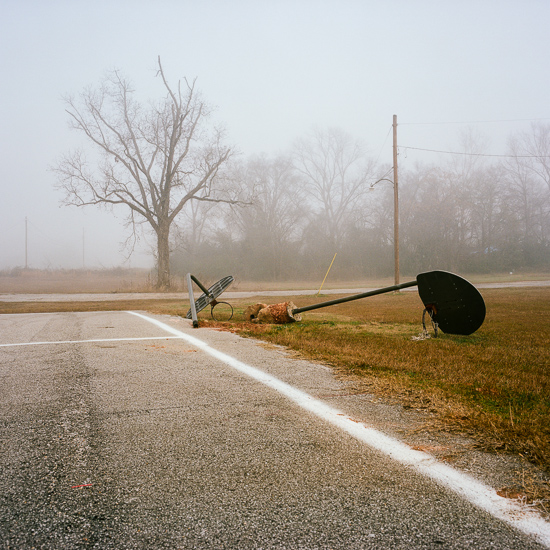 A man in my neighborhood stacks rocks in his front yard. From a distance, the cairns remind me of a small throng of people. Some wear long coats or dresses: clerics in cassocks. Some stand on two, wide and chunky legs. One stack sports a wide-brimmed, flat-topped rock, sat at a jaunty angle.
A man in my neighborhood stacks rocks in his front yard. From a distance, the cairns remind me of a small throng of people. Some wear long coats or dresses: clerics in cassocks. Some stand on two, wide and chunky legs. One stack sports a wide-brimmed, flat-topped rock, sat at a jaunty angle.
The first time I noticed these formations, the rocks appeared to be piled one on top of another like cords of firewood. But when I looked again, I could see that they were so subtly arranged that I was sure my neighbor had invested great time and effort in discerning—or should I say divining?—each rock’s essence, best side, ability to get along well with others, and to stand firm against wind and rain, landing butterflies and falling dollops of bird poop.
My neighbor, who calls these formations innunnguaq, human-shaped guideposts like those formed by native peoples in the Arctic, tells me that the key to his art is contact points and counterbalances. He finds a chip, crack, or hollow in the base rock and nestles the rock that he’s stacking into that depression, so the two make contact at three points. Because there has to be enough friction that the rocks don’t slide as he adds more weight, not just any three-pointed base of support will work. With each addition to the stack, my neighbor repeats the process, sure to position the center of gravity, the point where the weight of the rock is concentrated, directly over the base of support, the trio of contact points. “It’s easy,” he says, as he gives me a long look with his wild blue eyes.
My neighbor is a fine rock balancer, though there is nothing balanced about him. With his bushy beard and scraggly ponytail and his personality ingrown from living too long without the influence of women or children, he reminds me of a more cheerful and slightly better groomed version of the Unabomber. I suspect that he belches freely at dinner, rarely washes his sheets, and if he weren’t so busy collecting and stacking rocks, he, too, would be laboring over a manifesto about our collective addiction to consumerism and technology that would be so quirky and convoluted that no one would read through to the end.
When I was in my late thirties and early forties, I kept company with men like this. Each was bright, self-employed, uninsured, and in the case of two, built their homes from scratch. Each was ardently committed to one or more of the following “isms”: paganism, anarchism, Buddhism, neo-Luddism, bioregionalism, and socialism, with both the Marxist and the Libertarian branches represented.
One way or another, we seek what we need. At the time, I was trying to discern just how counterculture I still was, or rather how mainstream I was becoming with my first, tenure-track position in academia, complete with health insurance, a retirement plan, and the inevitable changes in one’s thinking that such security demands. During my dates with the shaggy rebels—Celtic fire festivals, a workers’ rights rally, morel mushroom-hunting expeditions, a protest against the National Forest Service near a doomed tract of pines, a wood-carving convention—I found myself yearning for something more conventional: dinner and a movie with a man who shaved, had an email address, and when asked what his favorite song was named something other than John Prine’s “Blow Up the TV.” By the time I went up for tenure, I had struck a pleasing balance between the renegade and the conformist in me, and I lost interest in dating Unabomber lookalikes.
But they haven’t lost interest in me. The last time I ran into the rock-balancer who lives in my neighborhood, he gazed upon me which such intensity and expectation, that it was as if he had a dietary deficiency, and I was the missing but essential mineral. I steer clear of him.
Yet now that my daughter, mother, brothers, and dearest friends are one or two plane rides away, my son is in the next county, and I’ve been divorced far longer than I was married, I sometimes still find myself drawn to the effigies that people my neighbor’s yard. If his truck isn’t in his driveway, I step from the road into his yard and lightly touch some of the more crookedly vertical stacks, registering the delicate balancing of molecules in my fingertips. With some stacks, the balance is so fine that I hold my breath in their presence.
—
Lisa Knopp is the author of five collections of essays. Her most recent collection, What the River Carries: Encounters with the Mississippi, Missouri, and Platte, was published by the University of Missouri Press in 2012. Currently she’s working on a collection called Like Salt or Love: Essays on Leaving Home, which includes “Balancing Act.” Knopp is an Associate Professor of English at the University of Nebraska-Omaha and lives in Lincoln. Her website is lisaknopp.com.

3 comments
Mari says:
Sep 17, 2013
Love your thoughts and words, Dr. Lisa, about the nature of balance. Spot on about the counter cultural life.
anthony says:
Sep 18, 2013
interesting how the negative space here — the space away from those composed men — shapes less male ingrown fanaticism shorn from the absence of women (and children), but the highlights instead the not so different idiosyncrasies of women alone in the absence of men (and children). An innunnguaq indeed.
Susan Newark says:
Oct 23, 2013
I love the way your neighbor represents that fine (and ever-changing) line between normal and abnormal, intrigue and fear, creativity and lunacy. The piece speaks universally about the nature of an artist. Thanks for the read!